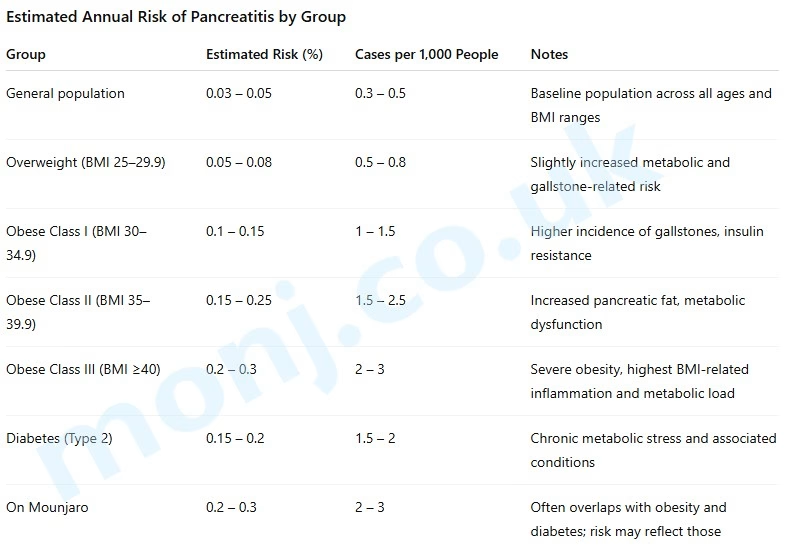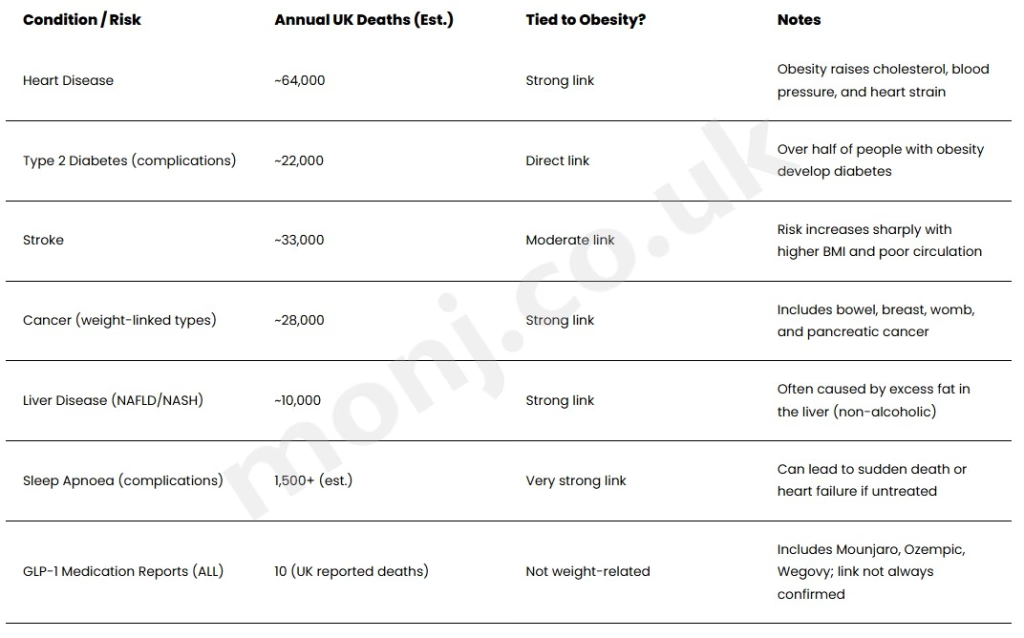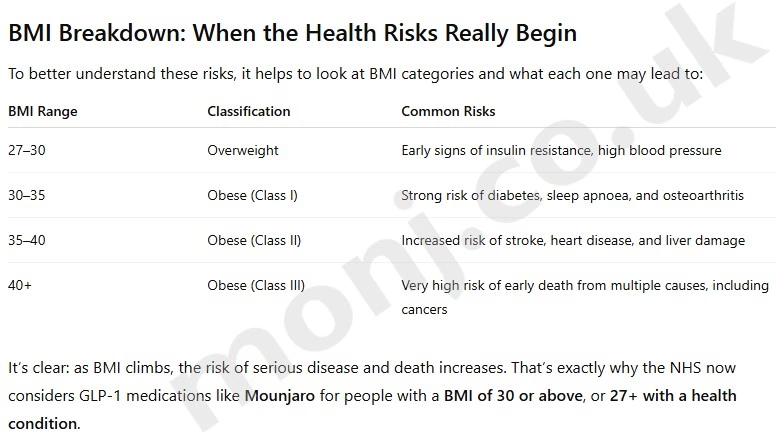Is the Risk of Pancreatitis from Mounjaro Being Blown Out of Proportion?
There’s been no shortage of dramatic headlines lately. Stories are circulating about Mounjaro, Ozempic, and Wegovy, with one concern rising to the top: pancreatitis.
But let’s pause for a moment. Is the risk of pancreatitis from Mounjaro really as alarming as it sounds? Or is the panic being blown out of proportion, especially when compared to the deadly health risks tied to obesity?
To understand the bigger picture, we need to compare real risks side by side.
Quick note about pancreatitis and Mounjaro:
The conversation around pancreatitis and Mounjaro risks has gained traction, but it’s important to keep things in perspective.
Pancreatitis can happen with Mounjaro, but it’s rare, less than 0.3%. If your BMI is over 35, your risk is about the same even without the medication.
Saying the risk is the same with or without the drug if your BMI is over 35 doesn’t exactly make for eye-catching headlines or compelling news.
As with any GLP-1 injection side effects, symptoms like severe abdominal pain, should be taken seriously, but they remain rare.
By contrast, obesity contributes to tens of thousands of obesity-related deaths in the UK every year. That’s why treatments like weight loss injections in the UK — including Mounjaro, Wegovy, and Ozempic, are increasingly being recommended for high-risk patients. If you’ve been searching for accurate information on pancreatitis from weight loss jabs or the full Mounjaro NHS risk profile, it’s essential to compare short-term medication risks with long-term consequences of untreated obesity.
When looking at GLP-1 medication comparison, Mounjaro shows promise for effective weight loss with a manageable risk profile. Just be sure to consider your BMI and health risks when discussing options with your GP — especially if your BMI is 27 or above and you’re living with a related condition.
Comparing the Reality: Weight-Related Illness vs. GLP-1 Risks

Let’s start with the facts. Below is a table showing how common, and deadly, various obesity-related conditions are in the UK compared to side effects linked with GLP-1 medications.
Perspective: That’s over 150,000 UK deaths annually from weight-related disease — compared with 10 possibly linked to GLP-1s like Mounjaro.

BMI Breakdown: When the Health Risks Really Begin
To better understand these risks, it helps to look at BMI categories and what each one may lead to:

It’s clear: as BMI climbs, the risk of serious disease and death increases. That’s exactly why the NHS now considers GLP-1 medications like Mounjaro for people with a BMI of 30 or above, or 27+ with a health condition.
What’s the Real Story with Pancreatitis and Mounjaro?
Now let’s talk specifically about pancreatitis and Mounjaro risks. Yes, it’s been reported. But here’s the context that rarely makes headlines.
The MHRA, which monitors drug safety in the UK, has received nearly 400 reports of acute pancreatitis linked to GLP-1 medications. Out of those, 181 involved Mounjaro. That means just under half of all GLP-1 pancreatitis reports are tied to this newer injection.
Even so, NHS information labels pancreatitis as “uncommon” — meaning it affects fewer than 1 in 100 users. While serious, it’s rare.
Now consider this: over 100 of those 181 Mounjaro cases were reported in just the first half of 2025. That rise likely reflects its increased use, not necessarily increased danger. In contrast, the health complications of obesity quietly lead to thousands of deaths every month.
Are GLP-1 Medications Worth It?
For many, the answer is yes. These medications, including Mounjaro, Wegovy, and Ozempic — can lead to significant weight loss, reduced blood sugar, and a lower risk of heart disease. People often experience improvements in blood pressure, cholesterol, and energy levels.
Of course, like any medication, they come with risks. If you’re taking Mounjaro and feel severe stomach pain, nausea, or vomiting, seek medical attention. Better safe than sorry.
But let’s not forget the scale of the problem they’re trying to treat. Obesity isn’t just a cosmetic issue — it’s a medical crisis. And for many patients, GLP-1 jabs are a life-changing intervention.
Final Thoughts about Pancreatitis and Mounjaro: Don’t Let Fear Cloud the Facts
We get it — headlines about pancreatitis and Mounjaro grab attention. But when you step back and compare the numbers, one thing becomes clear:
The risks of doing nothing are far, far greater.
Over 150,000 lives are cut short in the UK each year due to conditions directly linked to excess weight. GLP-1 medications like Mounjaro may carry a small risk of side effects, but they also offer a massive opportunity to turn the tide on chronic illness.
If you’re considering weight-loss treatment, talk to your GP. If you’re already on Mounjaro and feeling uncertain, don’t panic — get informed.
And if you’ve experienced any side effects, the Yellow Card scheme is there to help make these medications safer for everyone.